-
 Bitcoin
Bitcoin $108,270.9768
2.07% -
 Ethereum
Ethereum $2,489.8066
2.50% -
 Tether USDt
Tether USDt $1.0004
0.01% -
 XRP
XRP $2.2035
0.66% -
 BNB
BNB $661.6608
2.32% -
 Solana
Solana $150.6425
2.13% -
 USDC
USDC $0.9999
-0.01% -
 TRON
TRON $0.2810
0.90% -
 Dogecoin
Dogecoin $0.1645
3.05% -
 Cardano
Cardano $0.5743
4.91% -
 Hyperliquid
Hyperliquid $38.8419
-0.15% -
 Bitcoin Cash
Bitcoin Cash $504.3134
-2.64% -
 Sui
Sui $2.8096
4.35% -
 Chainlink
Chainlink $13.3095
2.21% -
 UNUS SED LEO
UNUS SED LEO $8.9469
0.33% -
 Avalanche
Avalanche $17.9231
3.93% -
 Stellar
Stellar $0.2340
0.74% -
 Toncoin
Toncoin $2.8458
3.21% -
 Shiba Inu
Shiba Inu $0.0...01158
3.47% -
 Litecoin
Litecoin $86.0738
1.94% -
 Hedera
Hedera $0.1507
2.99% -
 Monero
Monero $319.8544
2.31% -
 Polkadot
Polkadot $3.4081
1.95% -
 Dai
Dai $1.0000
0.01% -
 Bitget Token
Bitget Token $4.5645
0.91% -
 Ethena USDe
Ethena USDe $1.0002
0.00% -
 Uniswap
Uniswap $7.2959
5.27% -
 Aave
Aave $272.4623
2.90% -
 Pepe
Pepe $0.0...09680
2.96% -
 Pi
Pi $0.4955
0.78%
How to create a brand new wallet after being compromised?
If your crypto wallet is compromised, immediately create a new wallet, secure your recovery phrase, and transfer funds to protect your assets.
Jul 02, 2025 at 06:28 am
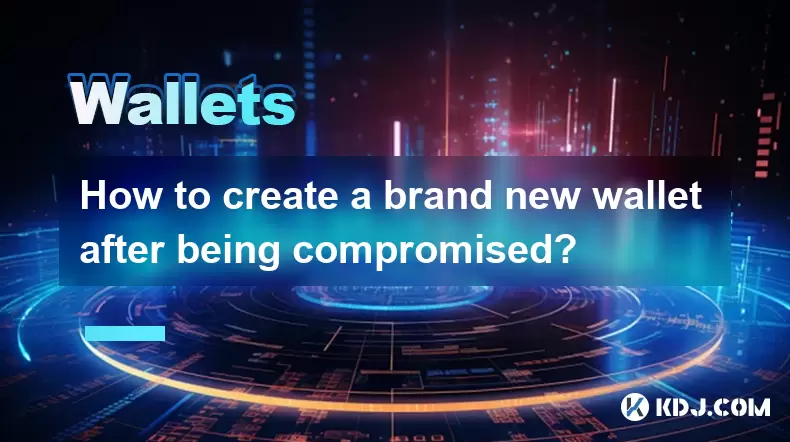
Understanding the Need for a New Wallet After a Compromise
If you suspect that your cryptocurrency wallet has been compromised, taking immediate action is critical. A compromised wallet can lead to irreversible loss of funds. The first step in protecting your digital assets is understanding how wallets function and what makes them vulnerable. Whether it's a software wallet on your mobile device or a hardware wallet storing private keys offline, the integrity of your private keys determines the security of your funds. If these keys have been exposed, creating a new wallet becomes necessary to prevent unauthorized access.
Backing Up Your Recovery Phrase and Private Keys
Before proceeding with creating a new wallet, ensure that you have a secure backup of your existing recovery phrase and private keys. These are essential for recovering any remaining funds from your old wallet if needed. However, if you believe they have been compromised, do not reuse them in the new wallet, as this could expose your new wallet to the same threats. Instead, store them securely for reference only. It’s important to note that once a recovery phrase is used in a compromised environment, it should be considered unsafe for future use.
Choosing a Secure Wallet Provider
Selecting a reliable wallet provider is one of the most important steps in setting up a new wallet after a compromise. Opt for reputable providers with strong security features, such as hardware wallets like Ledger or Trezor, or trusted software wallets like Electrum or Trust Wallet. When choosing, consider whether the wallet supports the cryptocurrencies you hold, offers two-factor authentication (2FA), and provides clear instructions for managing backups. Avoid wallets with unclear privacy policies or poor user reviews regarding security breaches. Always download wallet apps directly from official websites or app stores to avoid phishing attempts.
Generating a New Wallet and Recovery Phrase
Once you've selected a wallet provider, follow their setup process to generate a new wallet. During setup, you'll be prompted to create a new recovery phrase. This phrase typically consists of 12 or 24 randomly generated words and serves as the master key to your wallet. Write it down carefully and store it in a secure, offline location. Never save it digitally unless using an encrypted and air-gapped device. Some wallets also allow you to set a password for additional protection, which adds another layer of security when combined with the recovery phrase.
- Ensure you're in a safe, private environment when recording the recovery phrase
- Avoid sharing the phrase with anyone
- Consider using a metal seed phrase storage device for long-term durability
- Test the recovery process by restoring the wallet on another device before transferring funds
Transferring Funds to the New Wallet
After setting up your new wallet, the next step is to transfer your funds from the old wallet to the new one. Before initiating the transfer:
- Confirm the receiving address from your new wallet is accurate
- Start with a small test transaction to verify functionality
- Once confirmed, proceed with transferring the full balance
Ensure no transactions are pending from the old wallet, as these could be intercepted if the private keys were indeed compromised. If you're dealing with multiple cryptocurrencies across different blockchains, double-check the network compatibility of each receiving address to avoid sending tokens to an unsupported chain, which may result in permanent loss.
Frequently Asked Questions
Can I reuse my old wallet after creating a new one?
Reusing your old wallet after a suspected compromise is not recommended. If the private keys or recovery phrase were exposed, continuing to use the old wallet poses significant risk. It's best to treat the old wallet as compromised and avoid sending or receiving any further transactions through it.
How do I know if my wallet was actually compromised?
Signs of a compromised wallet include unauthorized transactions, missing funds, unexpected changes in wallet settings, or login attempts from unknown devices. Check your transaction history regularly and enable alerts if your wallet provider offers them. If you ever feel uncertain about your wallet's security, assume it's compromised and take preventive action immediately.
Should I inform the wallet provider about the compromise?
Yes, reporting the issue to your wallet provider can help them detect patterns of attacks or vulnerabilities in their system. Some providers offer support for compromised accounts or can guide you through emergency procedures. However, keep in mind that wallet providers typically cannot recover lost funds, especially in self-custodial models where you alone control the keys.
Is there a way to trace stolen cryptocurrency after a wallet compromise?
Tracing stolen cryptocurrency is extremely difficult due to the pseudonymous nature of blockchain transactions. While you can view transaction details on a blockchain explorer, identifying the recipient often requires cooperation from centralized exchanges or law enforcement agencies. Reporting the theft to relevant authorities and providing all available information increases the chances of recovery, though success is not guaranteed.
Disclaimer:info@kdj.com
The information provided is not trading advice. kdj.com does not assume any responsibility for any investments made based on the information provided in this article. Cryptocurrencies are highly volatile and it is highly recommended that you invest with caution after thorough research!
If you believe that the content used on this website infringes your copyright, please contact us immediately (info@kdj.com) and we will delete it promptly.
- XRP Price Targets $2.40 After Descending Channel Breakout: Is $40 Next?
- 2025-07-03 08:50:12
- All Blacks' Loose Forward Conundrum: New Faces and Familiar Battles
- 2025-07-03 08:30:12
- Bitcoin's Wild Ride: Open Interest, Institutional Bets, and Billions on the Line
- 2025-07-03 08:30:12
- Bitcoin, Strategy, & Profit: MSTR's Crypto Playbook and Trump's Digital Diversification
- 2025-07-03 08:50:12
- Bitcoin on the Brink: Active Supply Signals Potential Rally
- 2025-07-03 06:30:12
- Solana, XRP, SEI: Altcoin Titans and the Next Big Thing
- 2025-07-03 06:50:12
Related knowledge

Does Phantom wallet offer two-factor authentication (2FA)?
Jul 03,2025 at 09:00am
Understanding Phantom Wallet and Its Security FeaturesPhantom wallet is a widely used non-custodial cryptocurrency wallet that supports the Solana blockchain. It allows users to store, send, receive, and interact with decentralized applications (dApps) seamlessly. As security is a top priority for any crypto wallet user, security features like two-facto...

What is "rent" on Solana and how does it affect my Phantom wallet?
Jul 02,2025 at 08:35pm
Understanding 'Rent' on SolanaIn the context of Solana, the term 'rent' refers to a storage fee that users pay for maintaining data on the blockchain. Unlike Ethereum, where storage costs are paid once via gas fees during contract deployment, Solana implements a recurring cost model to ensure efficient usage of network resources. This means that any acc...
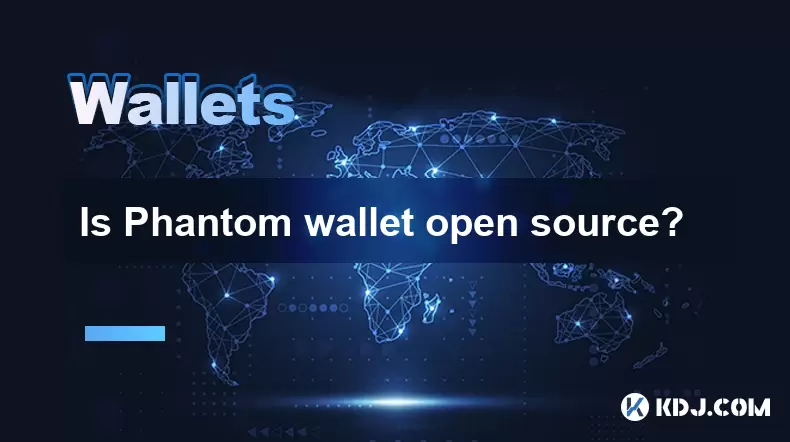
Is Phantom wallet open source?
Jul 03,2025 at 12:29am
What is Phantom Wallet?Phantom wallet is a non-custodial cryptocurrency wallet primarily designed for the Solana blockchain. It allows users to store, send, receive, and interact with decentralized applications (dApps) on the Solana network. The wallet is available as a browser extension and mobile application, offering a seamless experience for both be...
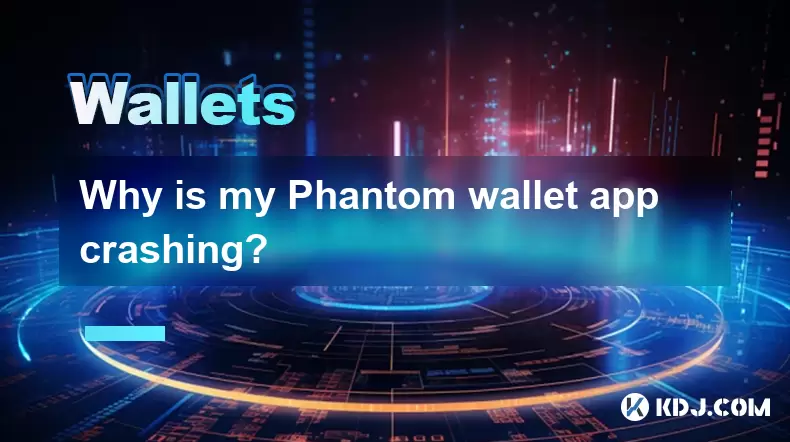
Why is my Phantom wallet app crashing?
Jul 02,2025 at 07:35pm
Understanding Phantom Wallet App CrashesIf you're experiencing issues with the Phantom wallet app crashing, you're not alone. Many users have reported similar problems, especially during high network activity or after recent updates. Phantom is a popular Solana-based wallet that allows users to store, send, and receive SOL tokens as well as interact wit...
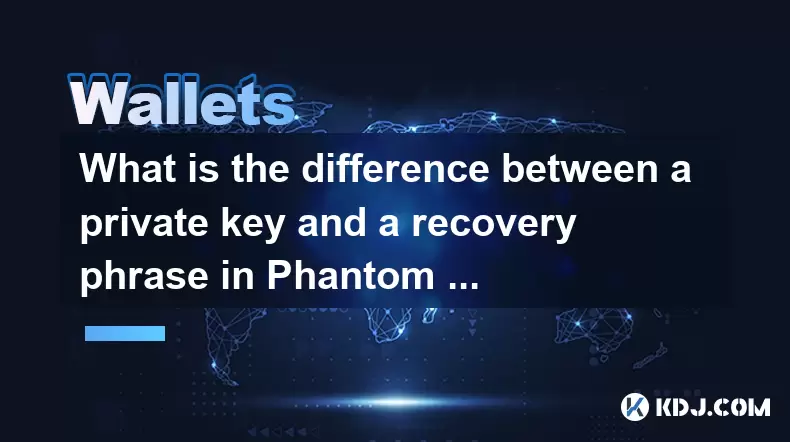
What is the difference between a private key and a recovery phrase in Phantom wallet?
Jul 02,2025 at 09:57am
Understanding the Basics of Phantom WalletPhantom wallet is a non-custodial digital wallet primarily used for interacting with the Solana blockchain. It allows users to store, send, and receive SOL tokens and other digital assets like NFTs. Non-custodial means that the user retains full control over their private keys and recovery phrases. Understanding...
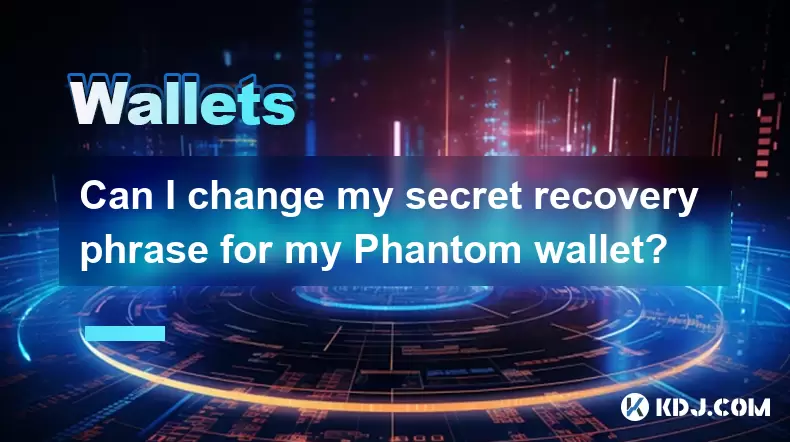
Can I change my secret recovery phrase for my Phantom wallet?
Jul 02,2025 at 12:07pm
Understanding the Role of a Secret Recovery PhraseThe secret recovery phrase, often referred to as a seed phrase, is a critical component in managing cryptocurrency wallets like Phantom. It serves as a backup mechanism that allows users to recover their wallet and associated assets if they lose access to their device or password. Typically, this phrase ...

Does Phantom wallet offer two-factor authentication (2FA)?
Jul 03,2025 at 09:00am
Understanding Phantom Wallet and Its Security FeaturesPhantom wallet is a widely used non-custodial cryptocurrency wallet that supports the Solana blockchain. It allows users to store, send, receive, and interact with decentralized applications (dApps) seamlessly. As security is a top priority for any crypto wallet user, security features like two-facto...

What is "rent" on Solana and how does it affect my Phantom wallet?
Jul 02,2025 at 08:35pm
Understanding 'Rent' on SolanaIn the context of Solana, the term 'rent' refers to a storage fee that users pay for maintaining data on the blockchain. Unlike Ethereum, where storage costs are paid once via gas fees during contract deployment, Solana implements a recurring cost model to ensure efficient usage of network resources. This means that any acc...

Is Phantom wallet open source?
Jul 03,2025 at 12:29am
What is Phantom Wallet?Phantom wallet is a non-custodial cryptocurrency wallet primarily designed for the Solana blockchain. It allows users to store, send, receive, and interact with decentralized applications (dApps) on the Solana network. The wallet is available as a browser extension and mobile application, offering a seamless experience for both be...

Why is my Phantom wallet app crashing?
Jul 02,2025 at 07:35pm
Understanding Phantom Wallet App CrashesIf you're experiencing issues with the Phantom wallet app crashing, you're not alone. Many users have reported similar problems, especially during high network activity or after recent updates. Phantom is a popular Solana-based wallet that allows users to store, send, and receive SOL tokens as well as interact wit...

What is the difference between a private key and a recovery phrase in Phantom wallet?
Jul 02,2025 at 09:57am
Understanding the Basics of Phantom WalletPhantom wallet is a non-custodial digital wallet primarily used for interacting with the Solana blockchain. It allows users to store, send, and receive SOL tokens and other digital assets like NFTs. Non-custodial means that the user retains full control over their private keys and recovery phrases. Understanding...

Can I change my secret recovery phrase for my Phantom wallet?
Jul 02,2025 at 12:07pm
Understanding the Role of a Secret Recovery PhraseThe secret recovery phrase, often referred to as a seed phrase, is a critical component in managing cryptocurrency wallets like Phantom. It serves as a backup mechanism that allows users to recover their wallet and associated assets if they lose access to their device or password. Typically, this phrase ...
See all articles

























































































